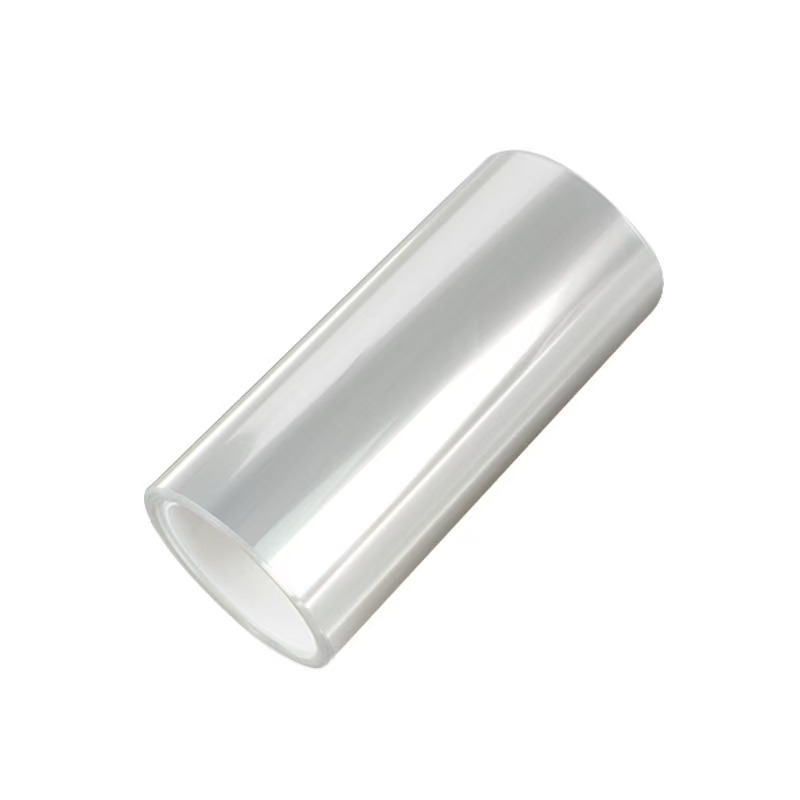Silicone vs Acrylic Adhesive in PET Films – Which One Should You Use?
When it comes to PET films used for protection, packaging, or electronics, the choice of adhesive is a critical factor. Two of the most commonly used types are silicone adhesive PET film and acrylic glue PET tape. While both offer strong bonding properties, they behave differently depending on the surface, environment, and application.
What is Silicone Adhesive PET Film?
Silicone adhesive PET film uses silicone-based adhesive to adhere to surfaces. It is known for:
- Excellent heat resistance: Suitable for high-temperature environments up to 260°C.
- Clean removal: Leaves little to no residue even after prolonged use.
- Low surface energy bonding: Ideal for plastics, coatings, or uneven textures.
Typical uses include electronics, touchscreens, and other precision components where residue must be avoided and delicate finishes protected.
What is Acrylic Glue PET Tape?
Acrylic glue PET tape, on the other hand, employs acrylic-based adhesives which provide:
- Strong initial tack: Grabs surfaces quickly and securely.
- Durability: Long-lasting performance in general packaging and industrial applications.
- Cost-effectiveness: Lower production costs than silicone adhesives.
It’s commonly used in consumer goods packaging, temporary labels, and surfaces not exposed to extreme temperatures or sensitive coatings.
Performance Comparison: Silicone vs Acrylic
Here’s how silicone adhesive PET film and acrylic glue PET tape compare in key categories:
| Property | Silicone Adhesive PET Film | Acrylic Glue PET Tape |
|---|---|---|
| Temperature Resistance | Up to 260°C | Up to 150°C |
| Removability | Excellent, clean removal | Good, may leave minimal residue |
| Cost | Higher | More economical |
| Surface Compatibility | Low-energy surfaces | High-energy surfaces |
| Residue Risk | Very low | Moderate |
Depending on your needs, one may clearly outperform the other.
Consider PET Lamination Film for Electronics
For electronic devices, PET lamination film for electronics is often combined with either silicone or acrylic adhesives. However, silicone adhesives dominate here because:
- They are non-reactive with circuit components.
- They ensure minimal outgassing, preserving device integrity.
- Their anti-static properties reduce ESD (electrostatic discharge) risks.
If you're sourcing PET lamination film for electronics, you’ll likely encounter silicone adhesive PET film as the preferred variant.
Environmental and Application Considerations
Silicone adhesive PET film is the better choice when:
- Heat, chemicals, or long-term exposure are involved.
- The application surface is painted, polished, or coated.
- Clean removal is a top priority.
Acrylic glue PET tape is better when:
- Budget constraints exist.
- Application is temporary or low-stakes.
- High initial adhesion is needed on paper, cardboard, or metal.
Practical Scenarios
- Mobile device manufacturing: Use silicone adhesive PET film for screen and body protection.
- Warehouse labeling: Use acrylic glue PET tape for temporary ID labels or wrapping.
- Printed circuit board protection: Use PET lamination film for electronics with a silicone backing.
Each case demonstrates how the application environment dictates adhesive choice.
Long-Term Storage and Aging
- Silicone adhesives maintain performance even after aging or UV exposure.
- Acrylic adhesives can yellow over time and degrade faster under stress.
If your product has a long shelf life or will be stored under dynamic conditions, silicone is the safer bet.
Final Verdict
Choosing between silicone adhesive PET film and acrylic glue PET tape is not a one-size-fits-all decision. It depends on your surface, temperature, durability requirements, and whether the film will touch sensitive electronics.
For high-value applications like PET lamination film for electronics, silicone adhesives are usually superior. For general use, acrylic adhesives offer a solid balance of cost and performance.
READ MORE:
- The Science of Adhesion: Why Silicone and Acrylic Behave Differently on PET Films
- How to Select the Right PET Film Adhesive for Your Industry
- Comparing Long-Term Performance: Silicone Adhesive PET Film vs. Acrylic Glue PET Tape
- Understanding the Role of Adhesives in PET Lamination Films for Electronics
Telephone: 008613530419893
E-mail:marie@selfadhesivefilm.com
ADDRESS (Shenzhen):903-286, Building A2, Guangming Technology Park, China Merchants Group, Guanguang Road, Fenghuang Community, Fenghuang Street, Guangming District, Shenzhen, Guangdong.
ADDRESS (Dongguan): 3rd Building No.45 Yinhu Road Shishuikou Community,Qiaotou Town, Dongguan, Guangdong.





